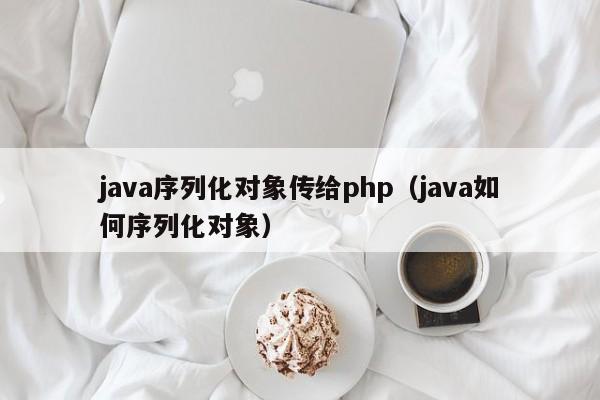我们也接到了一些问题,好吧,事实上,很多问题。我打算在这里一点一点处理他们。我将以我最感兴趣的问题--”SQL注入“开始。我将主要在本文介绍SQL注入的核心概念,让后对ORACLE 数据库防火墙(对于检测和阻止SQL注入很有用的工具)做一番介绍。
We also received a few questions, well, actually - a lot of questions. I'm going to try to tackle them here bit by bit. I'm going to start with my favorite topic - questions centered around SQL Injection. I'll center on the core concepts around SQL Injection in this article and then do a followup article regarding the Oracle Database Firewall - a tool useful for detecting and blocking SQL Injection attacks.
陈述中,我讨论了SQL注入式何等的阴险和难于侦测。事实上,我之前写过一篇文章。。。
During the presentation - I talked about how insidious SQL Injection is - and how hard it can be to detect. In fact, I've written about this before, in this article. The interesting thing about that article on injecting is the very last part of it, the section on "selective system grants". If you read that small section you'll see a comment "Note: Revised content—to prevent SQL injection— for this procedure submitted by Roy Jorgensen.". What that means is - the original article I submitted had a SQL Injection bug in it - right after I just spent pages going over SQL Injection! That wasn't too embarrassing was it (it was). But it does point out how easy it is for a SQL Injection bug to sneak into code - even when the coder knows full well what SQL Injection is and how it happens!
总之,研讨会中我讲了关于我使用的幻灯片--一个存储过程,里面含有SQL注入BUG。我问观众,许多开发员和DBA们都告诉我该段代码如何被SQL注入。。。我告诉他们正确
陈述中,我讨论了SQL注入式何等的阴险和难于侦测。事实上,我之前写过一篇文章。。。
During the presentation - I talked about how insidious SQL Injection is - and how hard it can be to detect. In fact, I've written about this before, in this article. The interesting thing about that article on injecting is the very last part of it, the section on "selective system grants". If you read that small section you'll see a comment "Note: Revised content—to prevent SQL injection— for this procedure submitted by Roy Jorgensen.". What that means is - the original article I submitted had a SQL Injection bug in it - right after I just spent pages going over SQL Injection! That wasn't too embarrassing was it (it was). But it does point out how easy it is for a SQL Injection bug to sneak into code - even when the coder knows full well what SQL Injection is and how it happens!
总之,研讨会中我讲了关于我使用的幻灯片--一个存储过程,里面含有SQL注入BUG。我问观众,许多开发员和DBA们都告诉我该段代码如何被SQL注入。。。我告诉他们正确
答案:如果我把这段代码放到我的模式并且授予你执行的权限,你就能等通过它得到我拥有的任何表!
Anyway, during the web seminar I talked about a slide I use - with a full stored procedure on it - that contains a SQL Injection bug. I ask the audience, usually full of developers and DBAs to tell me how the code can be SQL Injected.. I tell them right out - this code can be injected and if I were to put it in my schema and grant you execute on it - you could use this to read pretty much any table I own.
此刻,我通常听蟋蟀,没有手,没有志愿者(啥意思?)。下面是幻灯片:
I usually hear crickets at this point in time, no hands, no volunteers. Here is the slide:

Anyway, during the web seminar I talked about a slide I use - with a full stored procedure on it - that contains a SQL Injection bug. I ask the audience, usually full of developers and DBAs to tell me how the code can be SQL Injected.. I tell them right out - this code can be injected and if I were to put it in my schema and grant you execute on it - you could use this to read pretty much any table I own.
此刻,我通常听蟋蟀,没有手,没有志愿者(啥意思?)。下面是幻灯片:
I usually hear crickets at this point in time, no hands, no volunteers. Here is the slide:

create or replace procedure inj(p_date in date)
asl_rec all_users%rowtype;c sys_refcursor;l_query long;
beginl_query := 'select *from all_userswhere created = ''' ||p_date ||''''; --2次隐式转换dbms_output.put_line(l_query);open c for l_query;for i in 1 .. 5loopfetch c into l_rec;exit when c%notfound;dbms_output.put_line(l_rec.username || '.....');end loop;
end;
/
Note that the input to this procedure is a binary Oracle date - it is fixed length, 7 bytes of data - the century, year, month, day, hour, minute and second. The input is not a string, the input cannot contain things like "or 1=1" - typical SQL Injection attack strings. It can only contain an Oracle date. So - the question is - how can I 'trick' this stored procedure into showing me anything I want to see in the schema that owns the procedure (thus bypassing any and all security the application tier might have put in place - there are no restrictions on what I can and cannot see now).
Before we get there - let's talk about the bit of code that will be problematic - that is line 10. As noted there is a double implicit conversion going on there. That line of code is really:
Where created = to_date( to_char( p_date ) );
Before we get there - let's talk about the bit of code that will be problematic - that is line 10. As noted there is a double implicit conversion going on there. That line of code is really:
Where created = to_date( to_char( p_date ) );
There is an implicit to_char on the date field in order to concatenate it to the query string. Then, at runtime there is an implicit to_date on the string we concatenated in so we can compare it to a date. This is a very common thing I see in code all of the time (implicit conversions) - but it is pure evil. Not only will we discover it is the cause of a SQL Injection issue - but here it is a logic bomb as well.
First of all - by default - that to_date( to_char() ) conversion will have a side effect of effectively truncating the time component from the date field. That is evil. If you wanted to truncate the time off - please use TRUNC() on the date - it is much faster, more efficient, and expresses clearly that you intend to truncate the time component. To_date(to_char()) does none of that. Secondly - the conversion by default will also lose the century. If you were trying to look for things created during the war of 1812 - you would lose, you cannot search for 1812 - it would become 2012 (well, right now as I write this it would be 2012 - in 38 years it will become 2112 and you won't be able to search for 2012 anymore...).
Also consider that I said "by default". By default the NLS_DATE_FORMAT is DD-MON-RR (currrently, it has been different in the past!). What happens to this code when someone decides to change it? Your application might well start querying up entirely different data!
Also consider that I said "by default". By default the NLS_DATE_FORMAT is DD-MON-RR (currrently, it has been different in the past!). What happens to this code when someone decides to change it? Your application might well start querying up entirely different data!
So, the implicit conversion by itself is bad - but the real issue is the SQL Injection flaw. If you just run this procedure, by default - it certainly looks OK:
ops$tkyte%ORA11GR2> exec inj( sysdate )
select *
from all_users
where created = '02-FEB-12'
PL/SQL procedure successfully completed.
that looks OK - seems pretty safe - until, until someone who has read the documentation comes along. They might run your code like this:
ops$tkyte%ORA11GR2> alter session set
2 nls_date_format = 'dd-mon-yyyy"'' or ''a'' = ''a"';
Session altered.
ops$tkyte%ORA11GR2> exec inj( sysdate )
select *
from all_users
where created = '02-feb-2012' or 'a' = 'a'
A.....
EBRAPP.....
EBRTBLS.....
UTIL.....
USER2.....
PL/SQL procedure successfully completed.
Now that is surprising, you might not even know you could do that in an NLS_DATE_FORMAT. It is really hard to protect against something you don't even know you can do - isn't it? I've had people look at that example and scoff at it - saying "so what, they were allowed to see that table". Ok, take it a step further, I'd like to know what tables you own - so I can start querying them. I'll just do this:
ops$tkyte%ORA11GR2> alter session set
2 nls_date_format = '"''union select tname,0,null from tab--"';
Session altered.
ops$tkyte%ORA11GR2> exec inj( null )
Select *
from all_users
where created = ''union select tname,0,null from tab--'
....
现在你们看到问题的进展。。。在一个存储过程我发现了SQL注入BUG并解锁了整个模式!
Now you can see where this is going... I find one SQL Injection bug in one procedure and I've unlocked the entire schema.
问题来了--我们改如何防护? 做些什么不再受制于SQL注入?
So, the question now comes up - how do I protect myself from this? What can I do to ensure I'm not subject to SQL Injection in this code?
有2种方式--困难的方式和简单方式
There are two ways - the hard way and the easy way.
困难的方式:是引入SQL验证代码
The hard way involves writing code to validate everything and having serious code reviews of any code that uses string concatenation to build their SQL statements - any code that takes a parameter as input and concatenates it to a SQL query must be read and reviewed by many people - many people who will be super critical of the code. In this case, the resulting code would have to be:
where created = to_date( ''' || to_char(p_date,'yyyymmddhh24miss') ||''', ''yyyymmddhh24miss'')';
You need to have a coding standard that says:
- You shall never use implicit conversions ever, as in never.
- You shall always use an explicit date mask with dates, as in every single time, you will not rely on defaults (because defaults can inject you and because defaults can radically modify your logic unintentionally!)
And now you have to comb through all of your code looking for these bad practices (you should anyway - you have major logic bombs just waiting to explode in your code if you rely on default NLS settings and implicit conversions).
简单的方式:使用绑定变量
The easy way however is the way to go. The easy way is - just use bind variables! If you use bind variables, you cannot be SQL Injected - this is true for PL/SQL, for Java, for any and all languages. If you use bind variables you cannot be SQL Injected - period. It is that simple, really and truly. If the code was:
7 l_query := '
8 select *
9 from all_users
10 where created = :x';
11 open c for l_query USING P_DATE;
there is no way the end user can trick that SQL query into becoming anything other than what it is - in fact, for this example, the code should have been:
as
cursor c is select * from all_users where created = p_date;
begin
open c;
...
and nothing more - it shouldn't have even been using dynamic SQL. In Java/C#/C++/etc - you would be using dynamic SQL and you should be using bind variables. So, that answered all of these questions I received:
•where can I find an illustration of SQL injection?
•can u share the sql injection demo code
•Can you share that SQL injection slide?
•Can you show a code example of the SQL injection bug that nobody noticed during your presentations?
•Can you show us or point us to the site of the example of SQL injection bug?
•Is SQL injection all about binding, or is there more?
Another question was:
• should application layer deal with the SQL injection attacks prevention as that layer understands what the proper data access patterns look like rather than database?
My response to that is - the application layer should definitely be aware of SQL Injection and use secure coding practices which would include:
always use a bind variable unless you have an excellent technical reason not to - and then you must submit your code for review to at least five people who do not like you - they must be motivated to rip your code apart, critically review it, make fun of it - so they find the bugs.
However - we need to also employ defense in depth - for when the inevitable bug slips through. When I next write about this - I'll be going over the Oracle Database Firewall - a tool that can provide at least one more layer of defense.
The last question on this topic was:
• What is the dbms_assert PL/SQL package? How does it help prevent SQL injection? Should my organization be using it?
For that - I'll just forward you onto an excellent paper on this subject written by Bryn Llewellyn. You can find that paper here.












 京公网安备 11010802041100号
京公网安备 11010802041100号